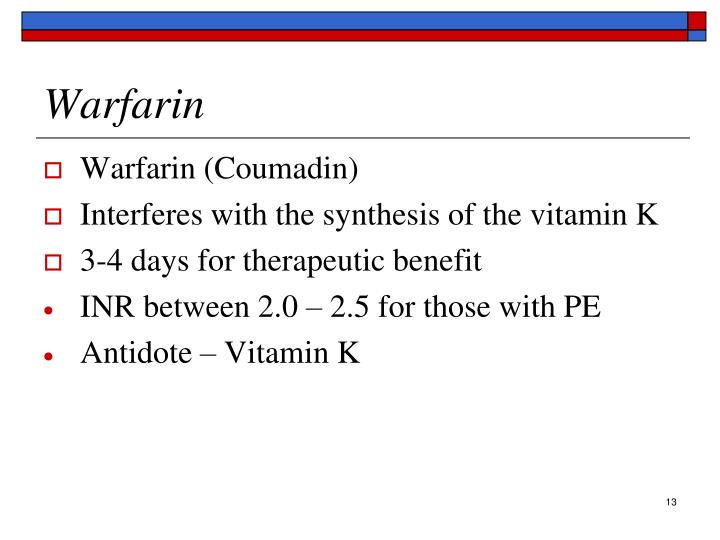


Warfarin, a vitamin K antagonist, is the most commonly prescribed oral anticoagulant. Food safety threats (e.g.Vitamin K is a vital micronutrient implicated in a variety of human diseases.Burkholderia pseudomallei (melioidosis).Brucella species (brucellocis) plus icon.Selected analytical methods: chemical methods query. Fatal rodenticide poisoning with brodifacoum. Long-acting anticoagulant rodenticide poisoning: an evidence-based consensus guideline for out-of-hospital management. Caravati EM, Erdman AR, Scharman EJ, et al.Probable: A clinically compatible case in which a high index of suspicion (credible threat or patient history regarding location and time) exists for a long-acting anticoagulant exposure, or an epidemiologic link exists between this case and a laboratory-confirmed case.Ĭonfirmed: A clinically compatible case in which laboratory tests have confirmed exposure. Suspected: A case in which a potentially exposed person is being evaluated by health-care workers or public health officials for poisoning by a particular chemical agent, but no specific credible threat exists. Environmental: Detection of a long-acting anticoagulant in environmental samples.Case classification.Detection of a long-acting anticoagulant (e.g., brodifacoum) in serum, plasma, or urine, as determined by commercial laboratory tests.Abnormal assays for factors II and VII in patients with unexplained bleeding and a normal PT, partial thromboplastin time, or INR, as determined by hospital or commercial laboratory tests.Prolonged prothrombin time (PT) and international normalized ratio (INR) (24 to 72 hours after exposure) persisting for weeks to months, as determined by hospital laboratory tests.Laboratory criteria for diagnosisīiologic: The criteria for diagnosis of a long-acting anticoagulant is the presence of one of the following factors: Coagulopathy might manifest as epistaxis, gingival bleeding, hematemesis, hematuria, hematochezia, menometrorrhagia, ecchymosis, petechial hemorrhages, intracranial hemorrhages, or bleeding that is disproportionate to the level of the injury (1-3). After a substantial ingestion of a long-acting anticoagulant, clinical signs of coagulopathy typically occur within 24-72 hours. After an acute unintentional ingestion of a long-acting anticoagulant, the majority of patients are entirely asymptomatic.


 0 kommentar(er)
0 kommentar(er)
